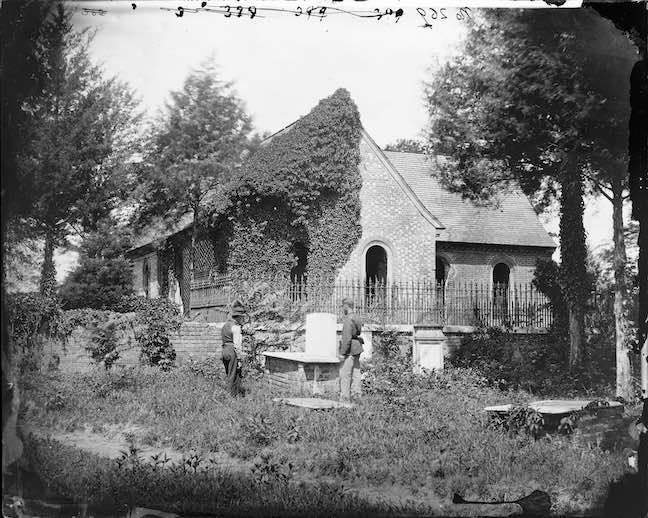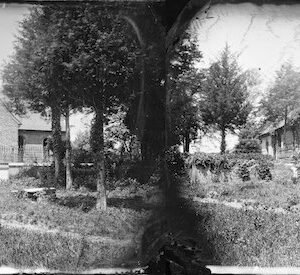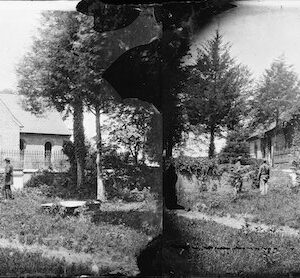| Credit: | by OSullivan (Timothy H.) |
|---|---|
| Date: | 1865.04 |
| Negative Size: | 8 in. x 10 in. |
| Equipment: | cartridge box |
| Locations & Lines: | Petersburg VA; Virginia |
| Military Units: | US Army |
| Structures & Establishments: | Blandford Church (Petersburg VA) |
| Sources: | Library of Congress; National Archives; USAMHI – MOLLUS collection |
$6.99
File Details: AIMMm, 750 DPI, TIFF, Original Negative, 42.2 Mb
Image ID: AIMM
Gardners Photographic Sketch Book Of The War. Vol. 2, No. 85. Blandford Church, Petersburg, Virginia. April, 1865.
Old Blandford Church, of which a view is here presented, is a great object of interest to all visitors; the cemetery surrounding it having monuments erected one hundred and fifty years ago. The walls of the main body of the building are of English brick, imported from the mother country. The services of the Episcopal Church were first performed in 1835, and continued to be read until 1825, nearly a century. Since that time, owing to the movement of the inhabitants of Blandford to the present site of Petersburg, the church has not been used, although the cemetery, now much enlarged, still continues to be the general depository of the dead. The ivy-covered walls now stand as a historic monument of what was formerly the aristocratic portion of the city. In the cemetery the stranger is not only shown the almost obliterated slab beneath which rests the remains of General Phillips, who died in May, 1781, during the war of independence, but also the monument erected to the memory of the brave volunteers from the Cockade City, who left houses and friends in the war of 1812. The greater space, however, has been allotted during the last four years to the graves of Our Soldiers, these words being cut on a simple wooden cross, to mark the resting place of the Confederate dead.
A somewhat eccentric sexton, whose father before him performed the same duties, is generally on the spot to enlighten visitors in regard to the history of the church, and is apparently much pleased to do so from the manner in which he enters upon his oft-repeated narrative. During the siege the edifice and its surroundings suffered but little damage from shot or shell, although the position was in front of the point of attack at the time of the explosion of the mine on the 30th July, 1864.
Etched onto negative: 3, 362, 399 [all crossed out]. No. 269.



